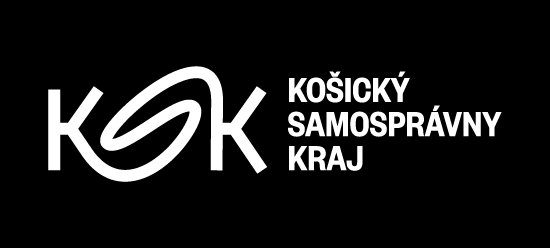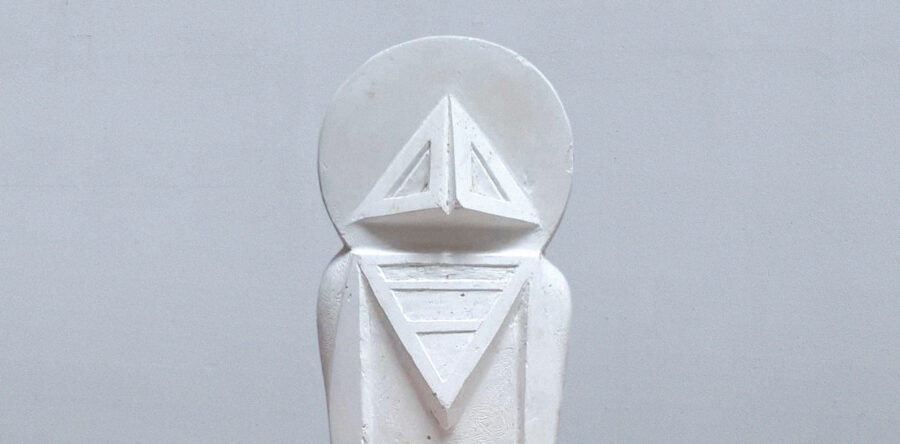Opening: 30. 10. 2024, 6 p.m.
Curator: Michal Štofa
Exhibition duration: 31. 10. 2024 – 26. 1. 2025
Alžbetina 22, Košice
The exhibition titled The Periphery of Consciousness is a retrospective overview of more than half a century of work by Imrich Svitana, an artist, jeweller, medal-maker and sculptor who remains creatively active today. The show aims to revise, re-evaluate and re-present a selection of works from more than sixty years of wide-ranging creative endeavours, encompassing free drawing, comic sketches and illustrative study drawings and featuring motifs which form intersections between two- and three-dimensional artistic media; sculptures in both small-scale and in larger formats, monumental works for public spaces, a series of zoomorphic climbing frames for children’s playgrounds, medal-making and, last but not least, jewellery pieces.
The artist’s relentlessly restless mind is a constant presence throughout this extensive list of artistic forms and a countless number of studies, proposals and finished works. As if on a conveyor belt, Svitana produces playful concatenations of objects which find voice in materially diverse, ingeniously critical, often illustrative or naivist geometrical forms, and interconnected and abstract figures and architecture that draw upon personal experiences, international socio-cultural trends, history and science fiction.
Despite the sheer range of approaches and media, Svitana’s oeuvre can be divided into two distinct categories. The first is his commercial work, largely consisting of monumental works for public spaces and commemorative medals. The second is his free creative work which encompasses comic sketches (from the period following the completion of his studies), free drawing, jewellery pieces, free small-scale sculptures and photography. Across both categories, however, we can trace Svitana’s efforts to break free of conventions and present his subjects in a playful, even naivist manner. His works are suffused with the stylization and schematization of the human figure which make reference to anonymous primitive art through the persistent use of the silhouette of the standing human form, often entirely subsuming the limbs and facial features. At other times, the artist composes these works using a mixed perspective inspired by ancient Egyptian art or focusing on only a single representative detail required for the depiction, such as the circle which symbolises the open mouth of a singer.
In his creations for large-scale works for architectural commissions or his proposals for the medal-making competitions in which he regularly participated, the conditions for the depictions of the themes and the use of symbols were strictly prescribed, but these limitations were entirely absent in his free artworks, and these pieces reveal an almost unlimited scope in terms of both their themes and the means by which they are executed. The themes of religion and mysticism have been the most frequently explored thematic domain of Svitana’s work throughout his career. In his later work, the world of ancient Egypt, particularly its sculpture, has served as a key inspiration, and Svitana’s personal experiences during his journey to Egypt in the 1960s became the foundation for his approach to materials and the crucial role of craftsmanship in achieving the aims of the artistic concept, in addition to drawing his attention to history, religion and contemporary social developments.
The end of the 1960s were marked by two fundamental events which are addressed in the work of many artists: the invasion of Czechoslovakia by the countries of the Warsaw Pact and the Moon landing. Both events evoked reflections on the concept of freedom; the former represented its restriction, but the latter allowed us to consider the limitless universe and the possible existence of undiscovered life on distant planets. Extraterrestrial civilizations and Christianity emerged as further themes of Svitana’s work, with the artist applying these concepts to reflect upon contemporary trends. In addition to the afore-mentioned efforts towards non-conformity and naivism, these works reveal a distinctive formal continuity and the use of repeated motifs. Crucial in this respect is the silhouette of the human figure, gradually stripped of defining features and abstracted into diffuse forms which we might struggle to identify at first glance or which instead resemble someone or something unknown. In their subjectively formed cosmic compositions, Svitana’s silhouettes can evoke the sense of a traveller through infinite space, a cosmonaut, or even an extraterrestrial standing at an arched gateway after his arrival on Earth (in the series of works titled Strange Visitor), works which emphasize the figural head reflecting the shape of a space helmet. Similar forms can be found in the work of Juraj Bartusz, such as Cosmic Head (1976 – 1978) or Time-space Sculpture (1976 – 1978). Bartusz also used computers in his work, in particular programming, image generation and production techniques.
Variations on these unknown figures also appear in Svitana’s jewellery pieces, in brooches and pendants composed from compositions of shapes resembling robotic, alien heads, figures with long, flowing robes or with emerging cuttlefish tentacles, or other figures which evoke the silhouettes of nuns standing beneath an arched temple.
Imrich Svitana (22. 1. 1944, Spišská Nová Ves) studied artistic metalworking under Professors Matejovský and Nušl at the Academy of Applied Arts in Prague from 1963 to 1970. The artist’s works are represented in the collections of the Slovak National Gallery, the East Slovak Gallery, The East Slovak Museum in Košice, the Orava Gallery, the Ernest Zmeták Art Gallery, the Tatra Gallery, the Liptov Gallery of P. M. Bohúň, the Bratislava City Gallery, the Central Slovak Gallery, the Regional Gallery in Prešov, the Nitra Gallery, the Gallery of Spiš Artists and also several Czech galleries, in addition to private collections in Slovakia and abroad.



